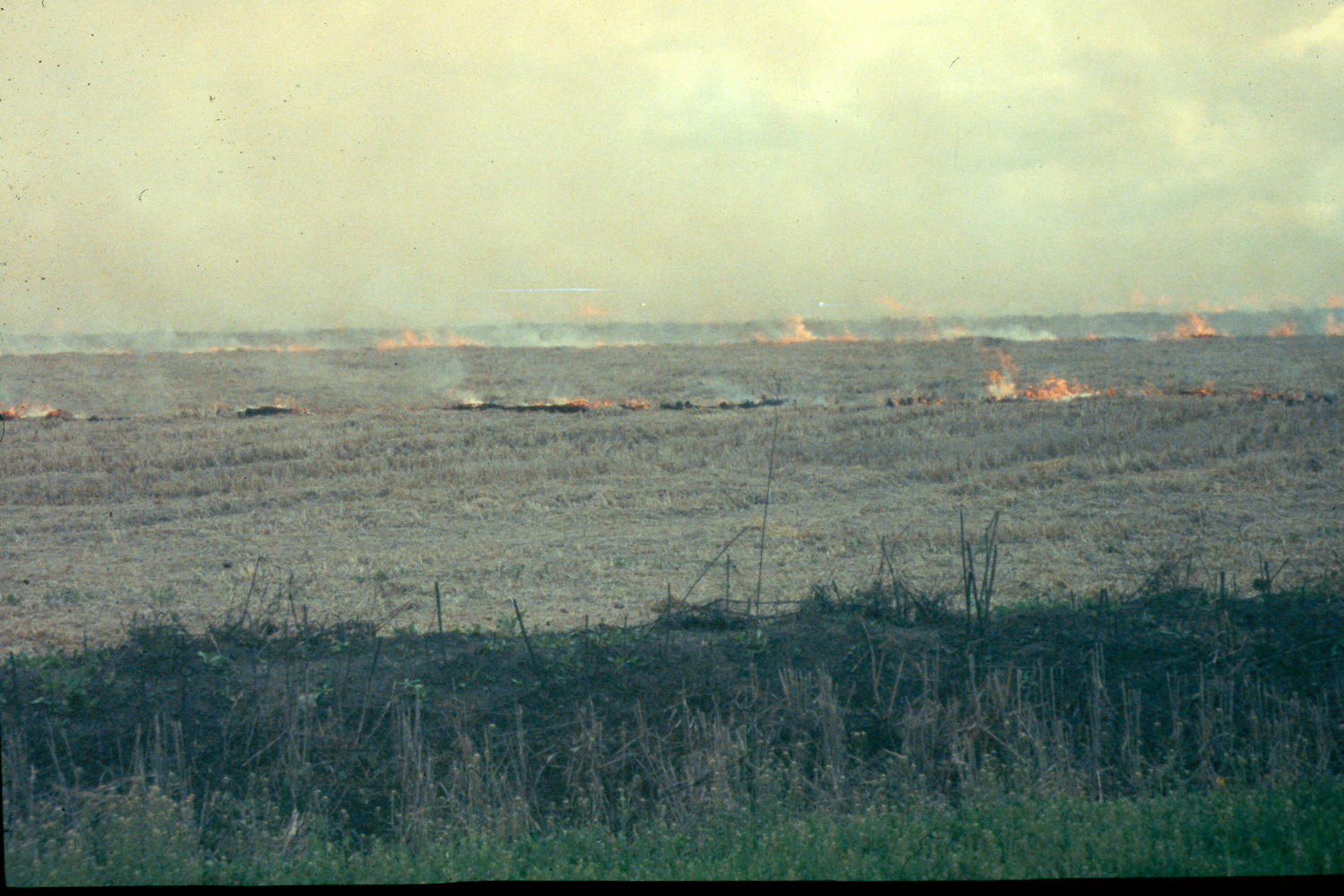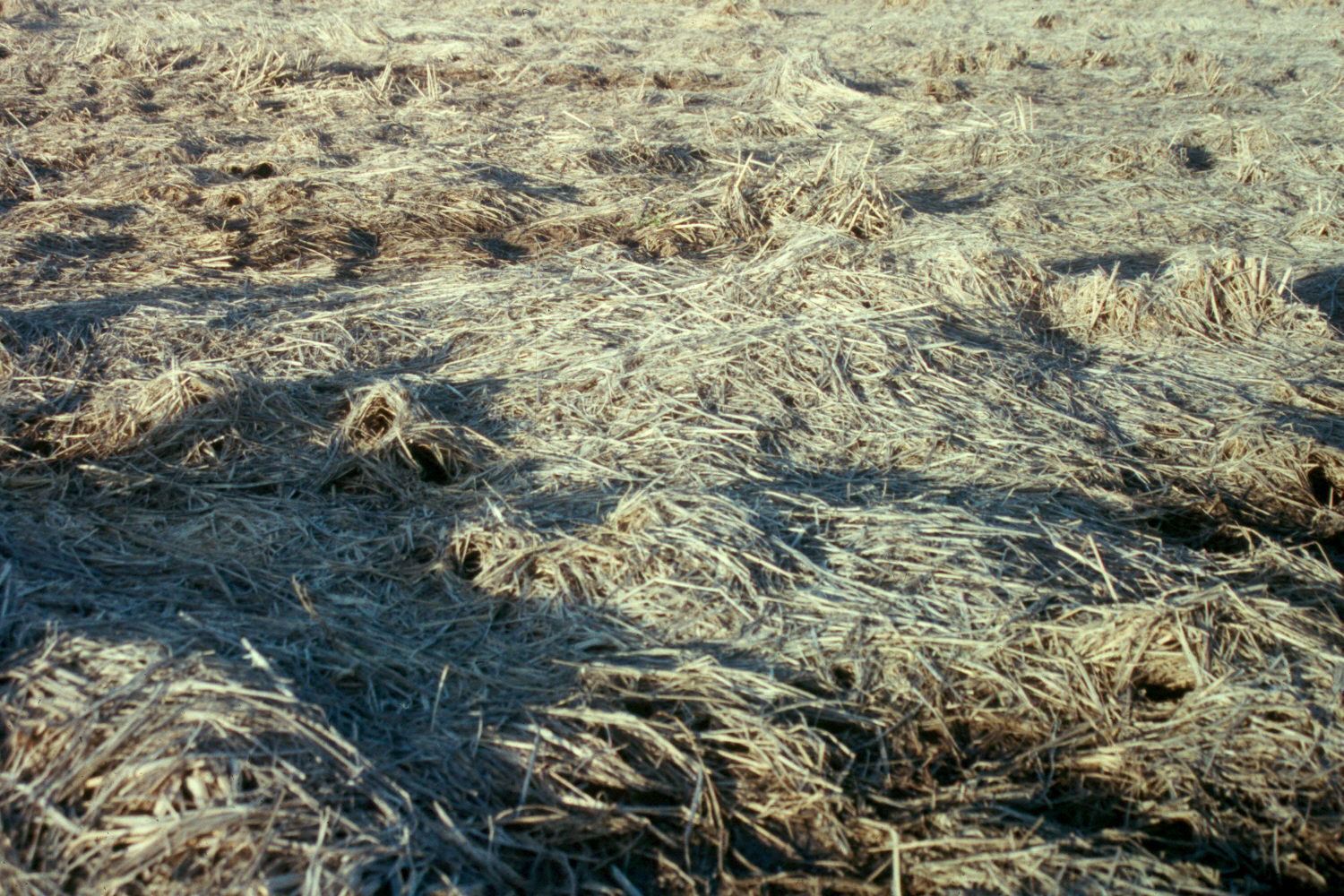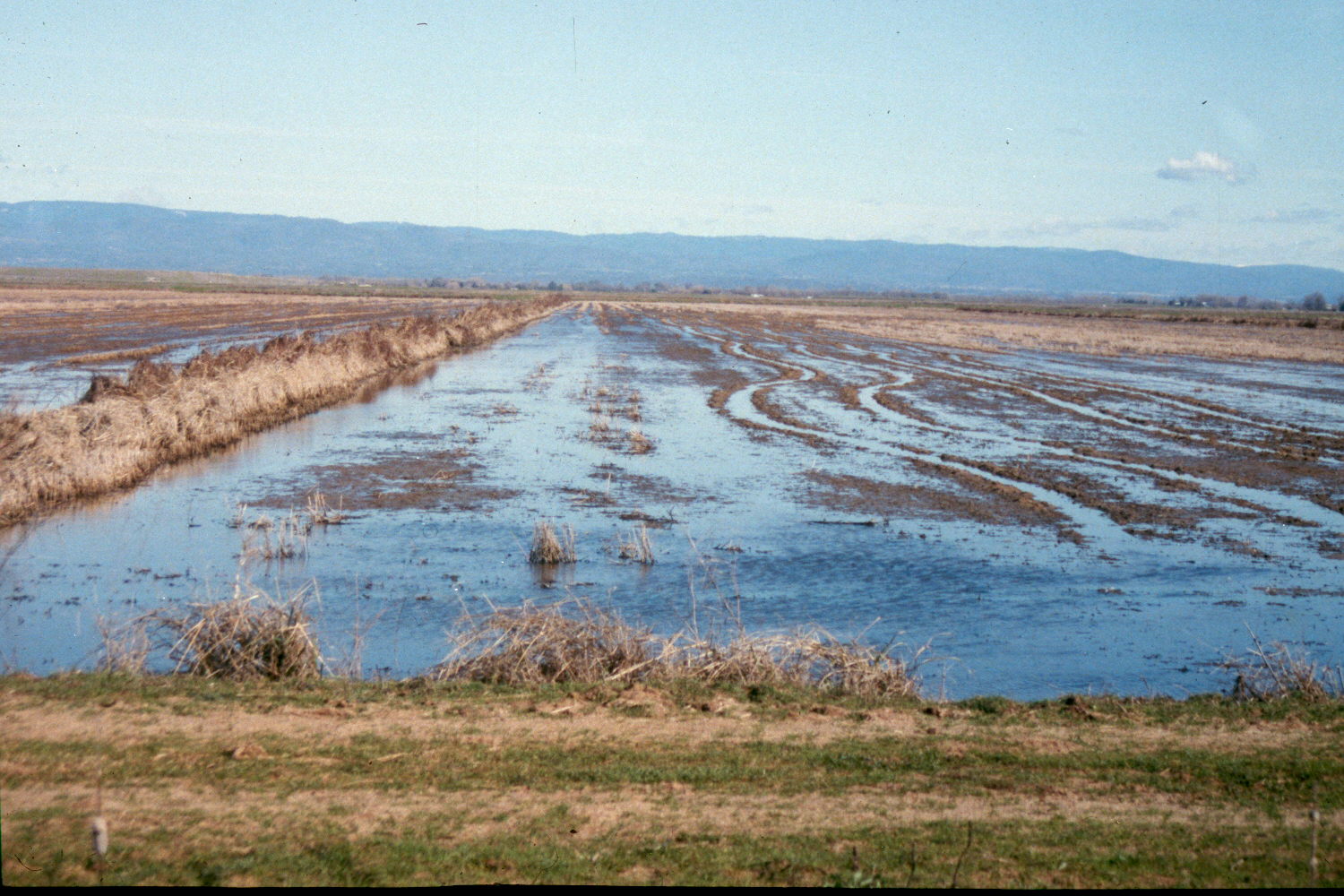


These pictures (from left to right) show a rice field being burned to remove rice straw, a close up of the mat of residual straw left on the field after harvest, and a harvested field after it has been flooded.
Rice is one of the most important crops worldwide. In California, rice is grown on about half a million acres of land, much of which was seasonally-flooded wetland habitat prior to agricultural development of the Central Valley during the 19th century. The Sacramento Valley, where most California rice is grown is also one of the most important wintering areas for waterbirds in western North America. In the early 1990s the management of California rice fields during winter (the non-growing season) began to change. Legislation designed to reduce air pollution was introduced to reduce the practice of burning rice stubble after harvest. If straw is not removed, it becomes much more costly to prepare fields for planting the following spring. Consequently, the law caused farmers to seek alternative ways to dispose of the residual straw left on their fields after harvest.
Many farmers have
responded to the situation by flooding their fields with shallow water throughout the winter.
The main goal of the flooding is to increase straw decomposition rates, but a side benefit
is that it returns large areas of land to something that at least approximates a wetland
habitat. The main goal of my research has been to determine whether these flooded rice fields
actually provide valuable habitat for waterbirds, and to see whether the way in which
flooded fields are managed influences waterbird use.

|

|

|
These pictures (from left to right) show a rice field being burned to remove rice straw, a close up of the mat of residual straw left on the field after harvest, and a harvested field after it has been flooded. |
For a list of references relating to this issue, click here
For more information about the study, please contact Chris
Elphick.